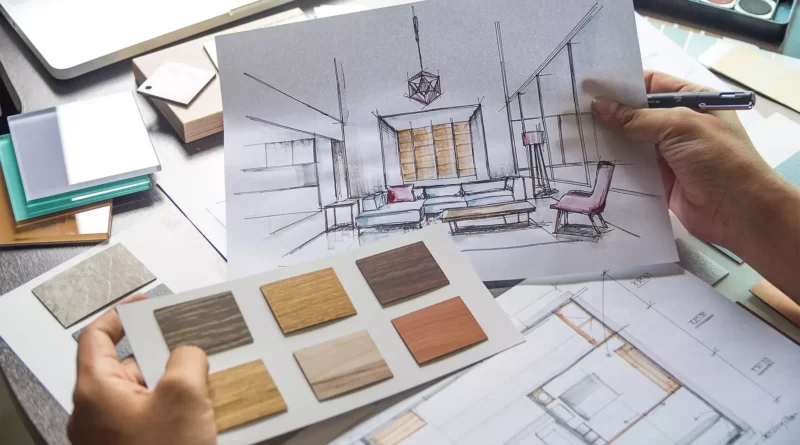Elevate Your Space: The Art and Science of Interior Design
What is Interior Design?
Interior design is more than just arranging furniture aesthetically in a room. It’s an art that combines creativity, functionality, and style to create living spaces that are both beautiful and practical. Interior designers are tasked with understanding space, structure, and the needs of their clients to craft environments that enhance quality of life.
The Importance of Interior Design
The significance of interior design lies in its ability to transform an ordinary space into something extraordinary. Well-designed spaces do not only look good; they feel good. They reflect the personalities and preferences of the inhabitants, making homes more enjoyable and workplaces more conducive to productivity.

Current Trends in Interior Design
Minimalist Designs
Minimalism in interior design is characterized by simplicity, clean lines, and a monochromatic palette with color used as an accent. It’s not just a style; it’s a way of living that emphasizes functionality and clutter-free spaces.
Minimalist design focuses on the idea of ‘less is more’. Furniture with simple, streamlined designs, neutral colors, and uncluttered spaces are hallmarks of this style. This approach not only creates visually appealing spaces but also promotes a sense of calm and order.
How to Achieve a Minimalist Look??
Achieving a minimalist look involves decluttering, choosing furniture with simple designs, and focusing on the balance between empty spaces and objects. It’s about selecting pieces that are functional and add value to the space.
Sustainable and Eco-Friendly Designs
With growing awareness of environmental issues, sustainable and eco-friendly designs are becoming increasingly popular. These designs focus on reducing environmental impact through the use of renewable resources and energy-efficient practices.
Materials and Practices
Sustainable interior design incorporates materials like bamboo, recycled wood, and eco-friendly paints. It also involves practices like maximizing natural light and using energy-efficient appliances.
Benefits for the Environment
By choosing sustainable and eco-friendly designs, we can significantly reduce our carbon footprint. This approach not only conserves natural resources but also promotes healthier living environments.
Color Theory in Interior Design
Understanding Color Palettes
Color is a fundamental element in interior design. It has the power to create mood, define unity, and alter the perception of how large or small a space is. The right color palette can bring harmony and balance to a room. Understanding color theory means knowing how colors interact, their visual impacts, and the emotions they evoke.
How Colors Affect Mood
Colors have a profound impact on our emotions and behaviors. For instance, blues and greens are known to evoke a sense of calm and relaxation, making them ideal for bedrooms and bathrooms. Warm colors like reds and oranges, on the other hand, create a sense of warmth and excitement, and are often used in living spaces to stimulate conversation and interaction.

Space Planning
Maximizing Small Spaces
Space planning is crucial, especially in smaller homes. The key to maximizing small spaces lies in smart furniture choices, such as multifunctional pieces and built-in storage. The use of mirrors and light colors can also create an illusion of more space, making a small room feel larger and more open.
Functional Layouts for Large Areas
Conversely, large rooms can feel overwhelming if not properly organized. In large spaces, the challenge is to create zones that feel intimate and purposeful. This can be achieved through strategic furniture placement, area rugs, and room dividers.

Decorating on a Budget
Thrifty Decorating Ideas
Decorating doesn’t have to be expensive. There are numerous ways to make a space beautiful without breaking the bank. This includes repurposing old furniture, adding vibrant accents like cushions or art, and incorporating plants for a fresh, lively touch.
DIY Projects
DIY projects not only save money but also add a unique, personal touch to your home. Simple projects like painting a wall, creating a photo gallery, or sewing your own curtains can make a significant difference in your space.
The article so far has covered various aspects of interior design, from color theory to budget-friendly decorating. As we proceed, we will explore more intricate elements like lighting, texture, and the role of technology in modern interior design. Each section is crafted to be informative, engaging, and SEO-optimized, appealing to both enthusiasts and professionals in the field. Let’s move on to the next sections.
Continuing with the exploration of interior design, we’ll now focus on aspects like lighting, texture, patterns, and the integration of technology in design.
Lighting in Interior Design
Natural vs. Artificial Lighting
Lighting plays a pivotal role in interior design. It can dramatically alter the mood and functionality of a space. Natural lighting is always preferred for its ability to make spaces feel larger and more welcoming. However, artificial lighting is essential for areas lacking natural light. The key is to balance ambient, task, and accent lighting to create a harmonious atmosphere.
Natural lighting, sourced from the sun, is highly coveted in interior design for its ability to enhance spaces with a warm, inviting glow. It not only illuminates but also creates an illusion of spaciousness and can positively impact mood and health. Conversely, artificial lighting, provided by electrical fixtures, offers versatility and control, allowing for tailored illumination in areas lacking natural light. It’s essential for functionality and can dramatically alter the ambiance of a space, complementing design aesthetics and fulfilling specific lighting needs.

Lighting for Different Rooms
Different rooms require different lighting solutions. For instance, a kitchen needs bright, practical lighting for safety in cooking, whereas a bedroom benefits from softer, more relaxing lighting to create a tranquil environment.
The Role of Texture and Patterns
Mixing Textures for Depth
Texture adds depth and interest to a room. Combining different textures, whether soft fabrics, rough wood, or smooth metals, can enhance the tactile quality of the space. It’s about creating a balanced yet dynamic interior.
Pattern Usage and Its Impact
Patterns, when used correctly, can bring life and movement to a room. They should complement the color scheme and the overall design theme. The trick is not to overdo it; too many patterns can make a space feel chaotic.
Technology in Modern Interior Design
Smart Homes and Automation
The integration of technology in interior design has led to the rise of smart homes. Automated systems for lighting, heating, and security are not only convenient but also energy-efficient. These systems can be designed to blend seamlessly with the aesthetic of the home.
Virtual Reality for Design Planning
Virtual reality (VR) has transformed the way designers plan and visualize spaces. VR allows both designers and clients to walk through and experience a space before any real-world changes are made. This technology ensures better planning and client satisfaction.
The article continues to unfold, covering various dimensions of interior design. The upcoming sections will delve into cultural influences, designing for well-being, furniture selection, and the importance of personal style. These sections are designed to be comprehensive, engaging, and informative, adhering to SEO principles for optimal online visibility. Let’s proceed with the final sections of the article.
As we approach the conclusion of our comprehensive exploration of interior design, we will now address the influence of culture, the significance of well-being in design, furniture selection, and the importance of personal style.
Cultural Influences in Design
Design Elements from Around the World
Interior design often draws inspiration from various cultures around the globe. This can range from the vibrant colors and patterns of African decor to the minimalist and nature-inspired elements of Japanese design. Integrating these diverse influences can create unique and meaningful spaces.
Incorporating Cultural Elements Respectfully
When incorporating cultural elements, it’s important to do so with respect and authenticity. Understanding the history and significance behind these design choices is crucial to avoid cultural appropriation and to celebrate diversity in design.

Interior Design for Well-being
Designing for Comfort and Relaxation
Spaces designed with well-being in mind focus on creating environments that are comfortable, calming, and conducive to mental and physical health. This includes considering aspects like ergonomics, natural light, and air quality.
Ergonomic Designs for Health
Ergonomic design is about creating spaces that are not only aesthetically pleasing but also physically comfortable and supportive. This includes choosing furniture and layouts that promote good posture and reduce strain.
Choosing the Right Furniture
Furniture for Different Styles
Selecting the right furniture is crucial for tying a room together. This choice depends heavily on the overall design style – be it modern, traditional, eclectic, or something else. Each style has its defining furniture characteristics.
Tips on Selecting Quality Pieces
Quality is key when it comes to furniture. Look for durable materials and solid construction. Investing in high-quality pieces can save money in the long run as they are more likely to last longer and remain timeless.
The Importance of Personal Style
Reflecting Individuality in Design
Your home should reflect your personal style. It’s a place where individual tastes and preferences come to life. Whether it’s through color choices, artwork, or furniture styles, personalizing your space makes it truly yours.
Balancing Personal Taste with Trends
While keeping up with trends can be exciting, it’s important to balance them with your personal style. Trends come and go, but your home should always feel like a reflection of who you are.

Conclusion
In conclusion, interior design is a dynamic and multifaceted field that combines art, functionality, and personal expression. Whether you’re redecorating a single room or overhauling an entire house, understanding the basics of interior design can transform your living space into something that is both beautiful and uniquely yours.




